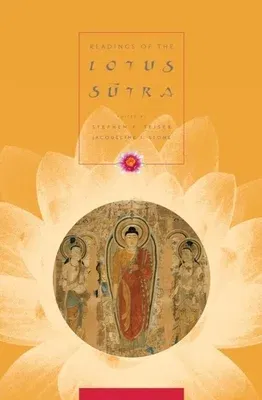Readings of the Lotus SutraPaperback, 29 July 2009

Qty
1
Turbo
Ships in 2 - 3 days
In Stock
Free Delivery
Cash on Delivery
15 Days
Free Returns
Secure Checkout

Part of Series
Columbia Readings of Buddhist Literature
Print Length
304 pages
Language
English
Publisher
Columbia University Press
Date Published
29 Jul 2009
ISBN-10
0231142897
ISBN-13
9780231142892
Description
Product Details
Book Format:
Paperback
Country of Origin:
US
Date Published:
29 July 2009
Dimensions:
22.71 x
15.34 x
1.42 cm
ISBN-10:
0231142897
ISBN-13:
9780231142892
Language:
English
Location:
New York
Pages:
304
Publisher:
Weight:
408.23 gm